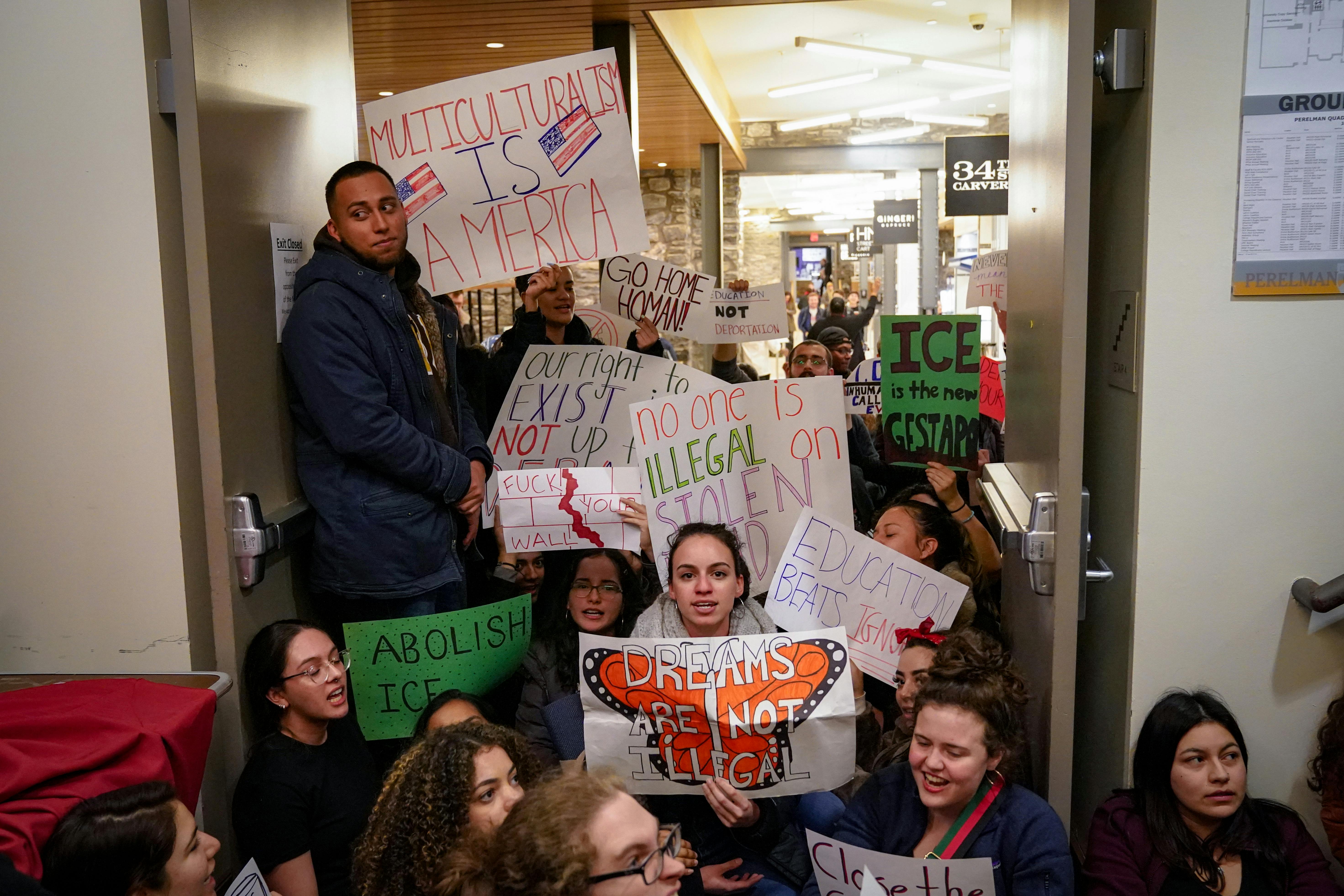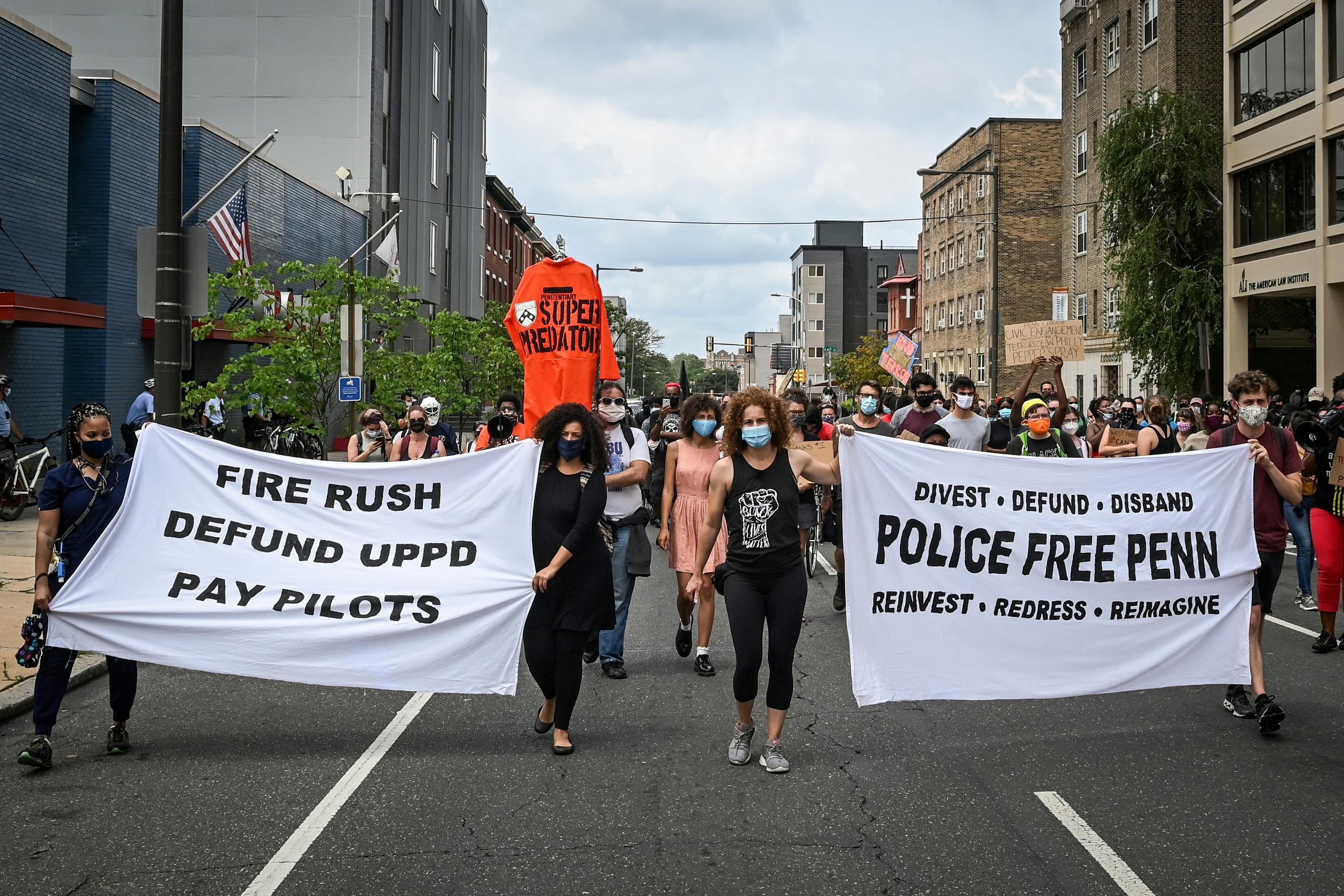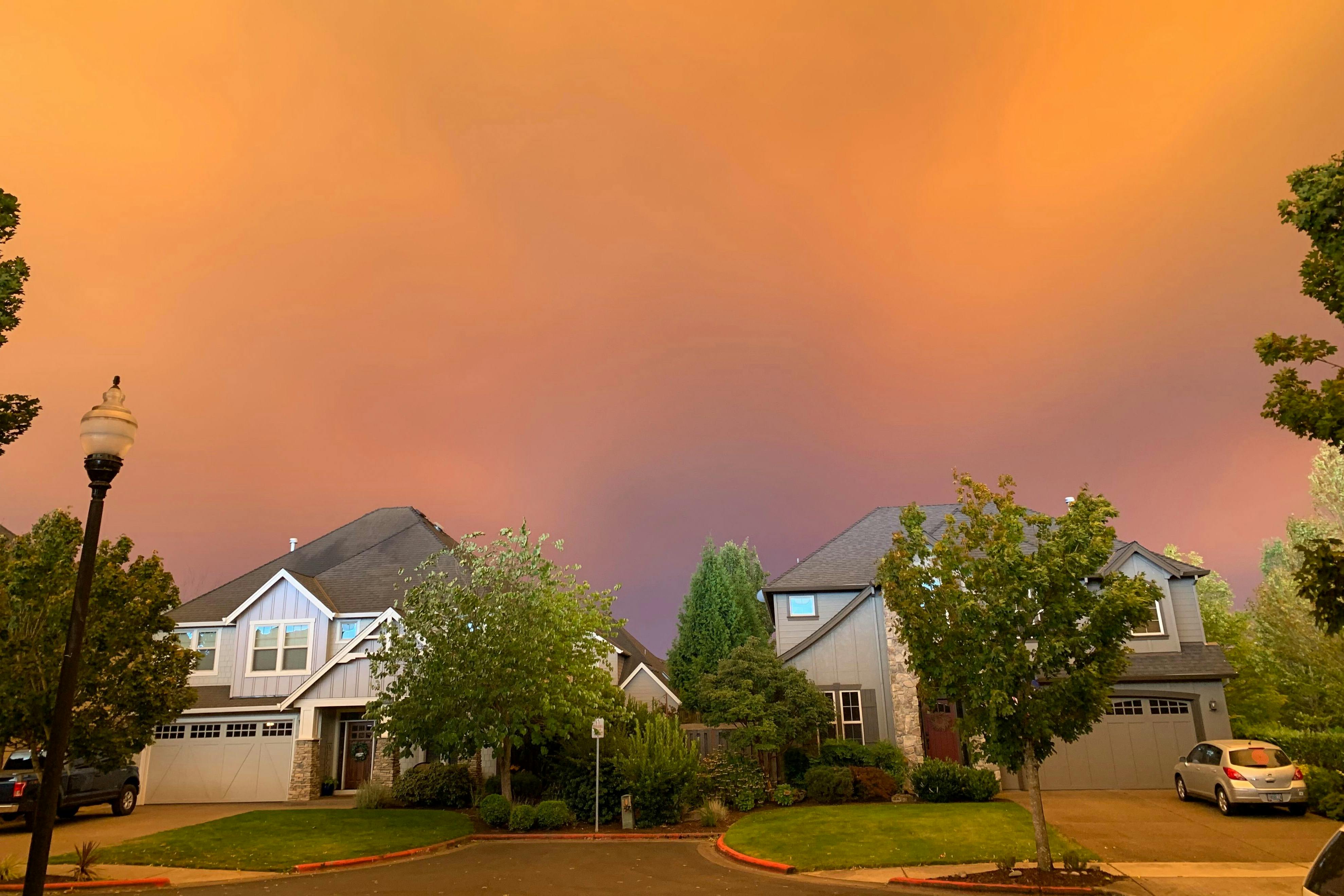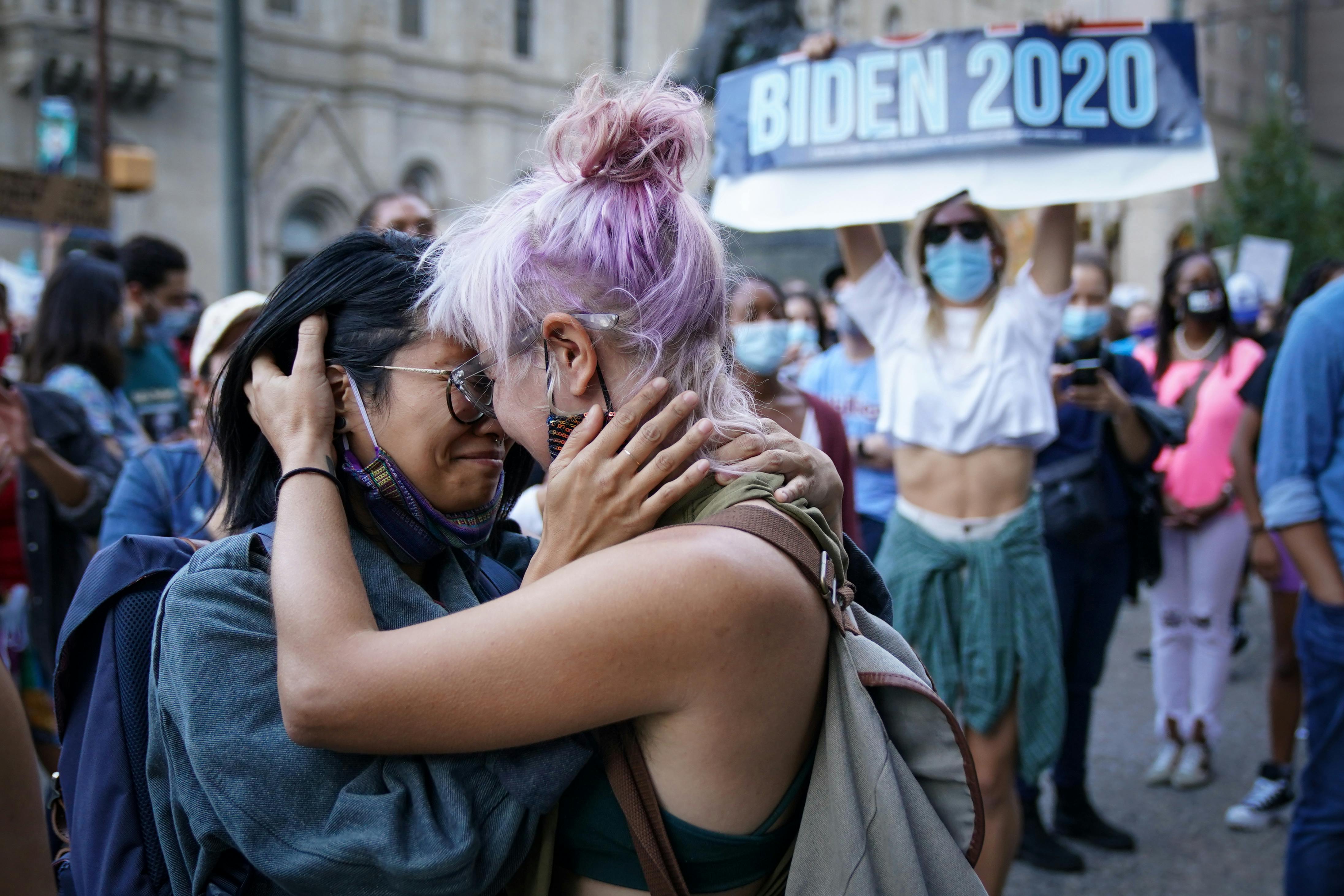
Unprecedented. Tragic. Revolutionary. Exhausting. Inspiring. Historic. 2020. The world has experienced some of the most extraordinary events in modern history this year, and the Penn community has been impacted by it all.
A raging pandemic forced campus to close, moving all classes online. The police killing of George Floyd sparked protests for racial justice, where students took to the streets in Philadelphia and across the country. A highly contentious presidential election turned all eyes to Pennsylvania, the state that ultimately delivered Joe Biden the victory.
The Daily Pennsylvanian's photographers have been on the ground documenting 2020 as it has unfolded. These images serve as another reminder of the year that we will never forget.

Jan. 15: Mourners gathered for a candlelight vigil in front of Penn’s LOVE statue to honor passengers who perished on Ukraine International Airlines Flight 752, which was shot down by Iranian missiles on Jan. 8. Most of the mourners were Iranian graduate students from Penn and nearby universities, and many had friends or family on the flight.

Jan. 28: Penn students filled the area outside Houston Hall's Hall of Flags to protest the visit of former United States Immigration and Customs Enforcement Acting Director Thomas Homan, who was speaking inside. Previously, an event with Homan on Oct. 23, 2019 had been shut down by protesting Penn students.

Feb. 10: 1968 Wharton graduate and President Donald Trump held a campaign rally in Manchester, N.H. ahead of the New Hampshire primary election. It was his first campaign event since he had been acquitted of two articles of impeachment on Feb. 5.

Feb. 18: A shopper looked at the empty shelves in The Fresh Grocer. After nearly 20 years of operations, the grocery store announced on Feb. 16 that it would close its location at 40th and Walnut streets at the end of the following month.

March 7: In the final game of the regular season against Columbia, senior forward AJ Brodeur scored a layup to become Penn men's basketball's all-time leading scorer with 1,832 career points. He also recorded the program's first-ever triple-double and led the Quakers to a victory that qualified them for the Ivy League tournament. Three days later, the tournament was canceled as COVID-19 continued to spread throughout the U.S.

March 13: A masked student pulled a cart full of her belongings across Locust Walk. Penn announced on March 11 that all classes would be moving online after spring break, which was extended by one week. Students were originally asked to move out by March 15, but the date was later changed to March 17 in response to student backlash.

Several buildings on Penn’s campus are re-opening for the spring semester.
April 21: Locust Walk remained largely empty as the trees became more and more green. Although the majority of students were not on campus, about 450 received approval to remain in on-campus housing.

April 28: The Wistar Institute began human testing of its coronavirus vaccine at Penn Medicine, the second vaccine to enter a phase one clinical study in the U.S. Pictured above is a researcher in the Weiner laboratory at the Wistar Institute performing the final detecting stages of a protein marker assay on March 6.

May 18: The University's 264th Commencement ceremony aired virtually at 11 a.m. EDT, marking the official conferring of degrees for the Class of 2020. On March 16, Penn canceled the in-person ceremony due to COVID-19 concerns, and later rescheduled it for May 22 and 23, 2021.

Protesters demonstrate outside of Philadelphia's City Hall in May 2020 following the police killing of George Floyd.
May 30: Socially distanced protesters knelt in front of City Hall in honor of George Floyd, who died on May 25 after a Minneapolis police officer knelt on his neck for more than eight minutes. The demonstration began peacefully but later became violent as multiple cars were set on fire and businesses were looted throughout the city. Police used pepper spray and tear gas to try to control the crowds.

June 1: Protesters frantically climbed over a fence between Interstate 676 and the Benjamin Franklin Parkway. The Philadelphia Police Department used tear gas to disperse the crowd of thousands that had taken over the highway. Large-scale protests continued in Philadelphia until June 6.

June 25: Penn announced that it would invite students back to campus for fall 2020 under a hybrid instruction model. Courses with fewer than 25 students would have the option to be held in person, though many departments still chose to offer their courses online only.

July 4: The United States Air Force Thunderbirds soared above Philadelphia, their third stop on a route over four cities that were significant in the United States' path to achieving independence. Philadelphia's trademark Fourth of July celebrations, like the Wawa Welcome America Festival and various firework shows, had been canceled.

July 24: Penn community members gathered outside the Penn Police Department headquarters to protest Penn Police's alleged involvement in the May 31 tear gassing of protesters and residents on 52nd Street in West Philadelphia. They also called on the University to fire Vice President for Public Safety and president of the Philadelphia Police Foundation Maureen Rush, defund the Penn Police Department, and pay PILOTs.

Aug. 11: In response to a spike in COVID-19 cases across the U.S., Penn reversed its decision to invite students back to campus for the fall semester. Although the University encouraged all students not to return to Philadelphia, many did and leased off-campus apartments.

Aug. 31: A rainbow arched over campus during the 7 p.m. EDT premiere of Penn's first online Opening Convocation Ceremony. Convocation, which officially welcomes incoming first years and transfer students to the University, is typically held on College Green.

Sept. 8: An orange-tinted sky loomed over a neighborhood near Portland, Ore. Wildfires raged across the West Coast starting in August, amounting to the worst wildfire season on record.

Sept. 11: Penn announced that it would continue testing students for COVID-19 in the Hall of Flags through the rest of the fall semester. Testing was originally planned to end on Sept. 12.

Oct. 23: Acme Markets at 40th and Walnut streets opened at 6 a.m. EDT to a line of over one hundred Penn students and West Philadelphia residents. The store replaced The Fresh Grocer and opened as scheduled, despite Pennsylvania-mandated construction delays earlier in the year due to COVID-19.

Oct. 26: A protester held her hands up in front of a line of police equipped with riot gear near 56th and Pine streets. Earlier that day, 27-year-old West Philadelphia resident Walter Wallace Jr. had been shot and killed by two Philadelphia police officers. Protests lasted throughout the night and into the early morning hours of Oct. 27.

Nov. 3: College senior Anna Lisa Lowenstein, a student poll worker, helped a student find his division number outside the ARCH building polling location on Election Day. More than 1,000 votes were cast at Houston Hall, ARCH, and Walnut Street West Library.

Nov. 7: A couple embraced in front of City Hall, where thousands of Philadelphians gathered following media projections that Joe Biden had won the state of Pennsylvania and had crossed the 270-vote threshold to become president-elect. Many of Pennsylvania's final votes came in from Philadelphia County and were overwhelmingly in favor of Biden. In the three days after the election, people had protested and danced outside the Pennsylvania Convention Center to urge that every vote be counted.

Dec. 8: Pfizer and BioNTech's COVID-19 vaccine was first administered in the United Kingdom. Pictured above, István Tombácz, a Penn Medicine researcher from Drew Weissman's laboratory, prepared his samples for a gel electrophoresis. Weissman's mRNA technology provided the basis for the vaccine.
The Daily Pennsylvanian is an independent, student-run newspaper. Please consider making a donation to support the coverage that shapes the University. Your generosity ensures a future of strong journalism at Penn.
Donate





Most Read
Department of Education opens investigation into Penn over ‘inaccurate’ foreign donation disclosures
Former Penn swimmers applaud Department of Education ruling that Penn violated Title IX
As deadline nears for Penn to comply with Department of Education demands, University remains silent
More Like This